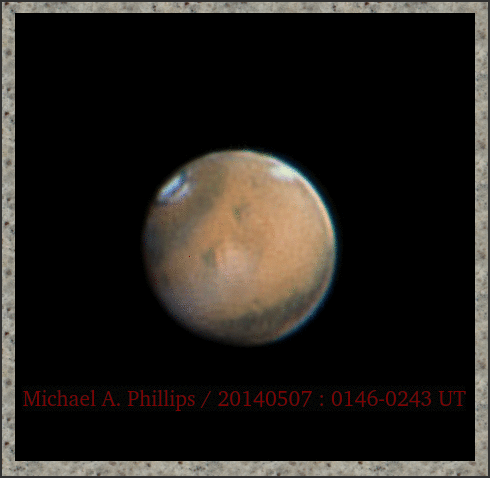I struggle with trees in my yard that obscure a large portion of my night sky. I setup my 14" telescope in one of the only areas that get to -30° dec or better and waited for my targets to clear the treetops. In most cases the target barely cleared and there are dark artifacts where the trees obscured rich star fields near the center of our Milky Way galaxy.
I really wanted to get all the Messier objects from my own house and in this particular spot I cannot see the North Celestial Pole (NCP), which meant I had poor alignment and instead of fixing I limped along in a rush to catch my window. That meant that most of these are unguided shots.
First up on my remainder of the collection is M69.

Astrometry.net solved - http://nova.astrometry.net/user_images/377725#annotated
M70 is at a distance of about 29,300 light years away from Earth and close to the Galactic Center. It is roughly the same size and luminosity as its neighbour in space, M69.
(ref: http://en.wikipedia.org/wiki/Messier_70)

Solved - http://nova.astrometry.net/user_images/378523#annotated
A photo I've already done, but I have to shoot when the skies are clear. Here's open cluster, M23.

Solved - http://nova.astrometry.net/annotated_full/815988
Next up is a tiny open cluster, Cl Berkeley 90, C 2033+466, Ocl 196 (ref - http://www.docdb.net/show_object.php?id=berkeley_90)
Astrometry.net (http://nova.astrometry.net/user_images/378121#annotated) didn't have labels for this, but I had identifed it via Cartes du Ceil's default catalogs and did find the above link and do see something faint. This was more of a finding a guide star test.
Next up is another guiding test/time killer. This didn't come out nicely at all, but here's NGC 6445, the Little Gem - or is it the Box Nebula? (http://www.cloudynights.com/topic/472894-confusing-ngc-object-naming/).
The last cluster I have shot before. M54 is unique in the Messier catalog in that it was "Previously thought to belong to our Galaxy at a distance from Earth of about 50,000 light-years, it was discovered in 1994 that M54 most likely belongs to the Sagittarius Dwarf Elliptical Galaxy (SagDEG),[7] making it the first globular cluster formerly thought to be part of our galaxy reassigned to extragalactic status, even if not recognized as such for nearly two and a quarter centuries." (ref - http://en.wikipedia.org/wiki/Messier_54)
Solved - http://nova.astrometry.net/user_images/378518#annotated
Solved - http://nova.astrometry.net/user_images/378518#annotated
Finally as a special treat for you sticking with all these poor quality images, I present a rushed M17,
The Omega Nebula, also known as the Swan Nebula, Checkmark Nebula, Lobster Nebula, and the Horseshoe Nebula is an H II region in the constellation Sagittarius. It was discovered by Philippe Loys de Chéseaux in 1745. Wikipedia. (ref - http://en.wikipedia.org/wiki/Omega_Nebula)
Here's my previous attempt in my 6"
And Via my 14", +Akule
Here's a recent shot of my scope and if you want to learn more ask +Akule
Here's my previous attempt in my 6"
And Via my 14", +Akule
Here's a recent shot of my scope and if you want to learn more ask +Akule
Lastly you can see all my Messier objects I've shot to day here - http://maphilli14.webs.com/mikesdeepskyphotos.htm
I have only 5 left to go!


















_rgb_mp.png)
_mono_mp.png)


_rgb_mp.png)

